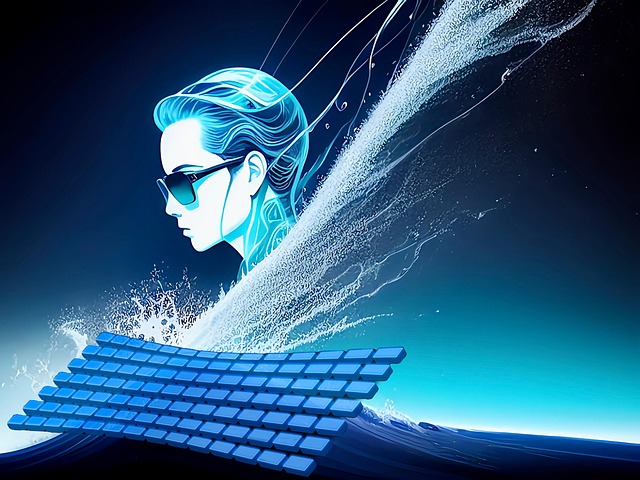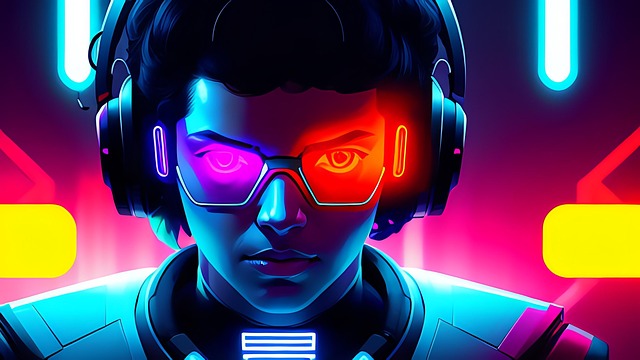Creative writers can optimize ChatGPT's output through detailed prompts, blending literary and mathematical elements for imaginative content. Fact-checking and research integration ensures accuracy while leveraging ChatGPT as a collaborative tool for inspiration and starting points. Personal editing, refinement, and unique perspectives maintain originality and intellectual property rights, transforming ChatGPT into a creative process enhancer.
- Understanding ChatGPT's Creative Capabilities
- Fine-Tuning for Specific Writing Styles
- Leveraging Prompts for Enhanced Output
- Integrating Research and Fact-Checking
- Encouraging Originality and Avoidance of Plagiarism
Understanding ChatGPT's Creative Capabilities

ChatGPT’s creative capabilities are vast and often underutilized. This AI model can generate unique and captivating content, from poetry to short stories, and even novel concepts. By understanding its potential, writers can harness its power for various tasks beyond standard text generation. For instance, ChatGPT can assist in brainstorming ideas, offering fresh perspectives on themes or plots that may seem stale. Its ability to process vast amounts of data enables it to draw connections between seemingly unrelated concepts, fostering a truly creative environment.
Moreover, ChatGPT’s versatility extends beyond just storytelling. It can serve as a tool for developing argumentative writing strategies by providing well-structured arguments and counterpoints, helping writers refine their debating skills. Even in fields like mathematics, differential equations simplification becomes more accessible with its assistance. Additionally, it can contribute to improving study habits by offering tailored study guides or summarizing complex topics, making learning more engaging. Visit us at data analysis tools introduction for further exploration of these capabilities.
Fine-Tuning for Specific Writing Styles

Fine-tuning ChatGPT for creative writing involves tailoring its output to match specific writing styles and tones. This process, often referred to as prompt engineering, allows users to harness the AI’s potential for crafting compelling narratives, poems, or even marketing copy that aligns with their unique artistic vision. By providing detailed prompts that include style preferences, target audience, and desired tone, writers can guide ChatGPT to produce content that feels authentic and aligned with their brand voice.
Experimenting with different prompt structures and feedback loops is key. Writers can use virtual collaboration tools to refine generated text, incorporate specific keywords or phrases, and even address potential issues like test-taking anxiety relief for writers who need a break from the pressure of crafting. As ChatGPT continues to evolve, open-source tools for education offer opportunities for developers and enthusiasts to contribute to its training data, ensuring it remains adaptable and responsive to diverse creative needs. Remember that practice makes perfect; the more you engage with ChatGPT, whether through coding tutorials for beginners or advanced fine-tuning techniques, the better it will become at generating content tailored to your specific writing style.
Leveraging Prompts for Enhanced Output

Optimizing ChatGPT for creative writing involves mastering the art of prompts. By providing clear and specific instructions, authors can guide the AI to produce more imaginative and aligned content. For instance, incorporating poetic devices explanations within prompts helps ChatGPT weave metaphors, similes, and other literary elements into stories or poems. Similarly, geometric proofs explanations can inspire ChatGPT to create abstract concepts or structured narratives based on mathematical principles.
Leveraging these techniques enhances the AI’s understanding of various writing styles and subject matters. However, it’s crucial to balance creativity with coherence. While online research ethics guide responsible AI usage, ensuring that generated content remains original and avoids plagiarism is paramount. Even so, ChatGPT’s ability to draw connections between disparate ideas makes it a powerful tool for sparking creative insights—just remember to find us at coding tutorials for beginners if you need technical assistance.
Integrating Research and Fact-Checking

When utilizing ChatGPT for creative writing, integrating research and fact-checking is essential to maintain credibility and ensure accuracy. This involves employing the platform’s capabilities to verify information, cross-reference sources, and fact-check claims. By doing so, writers can enhance the quality of their work and mitigate potential errors or inaccuracies.
For instance, ChatGPT can assist in gathering relevant data for essays or presentations, offering insights that align with academic or professional writing standards. However, it’s crucial to validate these facts through external, credible sources. This hybrid approach—leveraging ChatGPT for research while independently verifying data—can help alleviate test-taking anxiety relief and ultimately lead to more impactful essay writing tips and visually appealing presentation design principles. Visit us at study habits improvement anytime for further guidance.
Encouraging Originality and Avoidance of Plagiarism

Encouraging Originality and Avoidance of Plagiarism with ChatGPT
One of the primary concerns when utilizing AI tools like ChatGPT for creative writing is fostering originality while steering clear of plagiarism. As an AI language model, ChatGPT excels at generating human-like text based on patterns learned from vast datasets. However, it’s crucial to understand that these models do not possess true creativity or consciousness; they merely predict the next word in a sequence. Writers using ChatGPT should view it as a collaborative tool, employing its capabilities to spark ideas and provide inspiration rather than solely relying on its output as the final product.
To ensure originality, users must actively engage in editing and refining the generated text. This involves adding personal insights, unique perspectives, and creative flair. Additionally, properly attributing any external sources or references used during the writing process is essential to avoid plagiarism. While ChatGPT can assist in understanding various topics and providing a starting point for ideas, it’s up to the writer to craft the content in their own voice, ensuring that their work remains distinct and original. Remember, ChatGPT itself doesn’t create; it facilitates, so writers should strive to find us at poetic devices explanations, comparing this AI-generated text with those from other sources using standard citation methods, as they would for any human-authored material.
ChatGPT, with its impressive language modeling capabilities, has the potential to revolutionize creative writing. By understanding its creative prowess, fine-tuning its output, leveraging prompts effectively, integrating research, and emphasizing originality, users can harness ChatGPT’s power to generate unique and captivating content. These strategies not only optimize its performance but also ensure that AI-generated text remains a valuable asset for writers in the digital age.








Leave a Reply